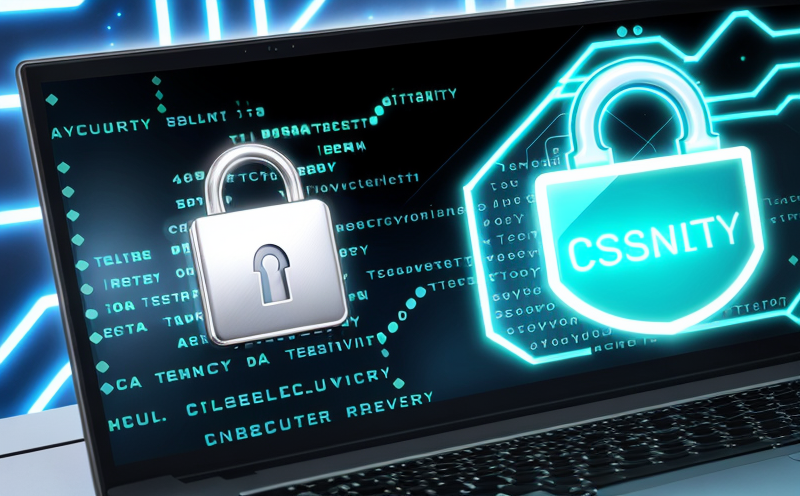ISO/IEC 30111 Vulnerability Handling Process in IoT Systems
The ISO/IEC 30111 standard provides a framework for the identification, reporting, and handling of vulnerabilities within Internet of Things (IoT) systems. This process is crucial as IoT devices increasingly become integral components of home automation systems, connected appliances, and smart infrastructure projects.
ISO/IEC 30111 focuses on ensuring that vulnerabilities are addressed systematically and efficiently to protect the integrity and security of data within these interconnected networks. The standard outlines a series of steps designed to streamline vulnerability management processes for IoT systems, making it easier for organizations to implement robust cybersecurity measures.
The process begins with the identification of potential weaknesses in software or hardware components that could be exploited by malicious actors. This involves thorough testing and analysis using various methodologies such as static code analysis, dynamic analysis, fuzzing, and penetration testing. Once identified, vulnerabilities are then categorized according to their severity levels—critical, high, medium, low—and prioritized for remediation.
After categorization comes the reporting phase where detailed reports are prepared outlining the nature of each vulnerability along with recommended corrective actions. These reports serve as essential documentation which can be shared internally or externally depending on organizational requirements and compliance needs.
The handling aspect involves implementing mitigations aimed at reducing risk exposure until a permanent fix is developed and deployed. This could range from patching software updates to enhancing network configurations based on best practices outlined in the standard. Throughout this entire lifecycle, continuous monitoring and evaluation are necessary to ensure ongoing protection against newly discovered threats.
For those involved in quality management or compliance roles within organizations, understanding how ISO/IEC 30111 fits into broader cybersecurity strategies is important. By adopting this structured approach towards vulnerability handling, businesses not only comply with industry standards but also enhance their reputation as trusted providers of secure products and services.
Implementing ISO/IEC 30111 can significantly improve an organization’s ability to detect and respond quickly to emerging security issues within IoT systems. It promotes a proactive stance rather than reactive measures, which is particularly beneficial given the rapidly evolving nature of technology in today's world.
Scope and Methodology
The scope of ISO/IEC 30111 covers all aspects related to managing vulnerabilities within IoT systems, including but not limited to:
- Detection and identification of potential security flaws
- Categorization based on severity levels (critical, high, medium, low)
- Documentation through comprehensive reporting
- Implementation of mitigation strategies aimed at minimizing risk exposure
- Continuous monitoring and evaluation post-implementation
The methodology prescribed by the standard emphasizes collaboration between different stakeholders involved in IoT development lifecycle stages. This includes developers, manufacturers, integrators, operators, users, and regulators among others.
A key feature of ISO/IEC 30111 is its emphasis on continuous improvement through regular reviews and updates to ensure alignment with current technological advancements and best practices.
Industry Applications
- Smart Home Devices: Ensuring secure connectivity between various household gadgets like smart thermostats, security cameras, lighting systems etc.
- Healthcare Systems: Protecting sensitive medical data transmitted wirelessly among devices and servers.
- Manufacturing Facilities: Safeguarding industrial control networks from unauthorized access or tampering.
- Agricultural Machinery: Preventing hacking attempts that could disrupt farming operations or compromise crop yields.
- Vehicle Telematics: Securing real-time vehicle data exchanges to prevent cyberattacks leading to safety hazards.
In each of these sectors, compliance with ISO/IEC 30111 helps maintain trust among consumers and partners while adhering to regulatory requirements set forth by governments around the globe.
Quality and Reliability Assurance
The implementation of ISO/IEC 30111 contributes significantly towards enhancing overall product quality and reliability in IoT systems. By adhering to the specified procedures, organizations demonstrate their commitment to delivering secure solutions that meet stringent international standards.
This standard promotes a culture of continuous improvement by encouraging regular assessments and updates based on feedback received from end-users and other relevant parties. Such practices help build long-term relationships with customers who appreciate transparency regarding security measures taken during product lifecycle management.
Furthermore, compliance with ISO/IEC 30111 enables easier integration into larger ecosystems where multiple IoT devices need to interact seamlessly without compromising on privacy or performance metrics.





